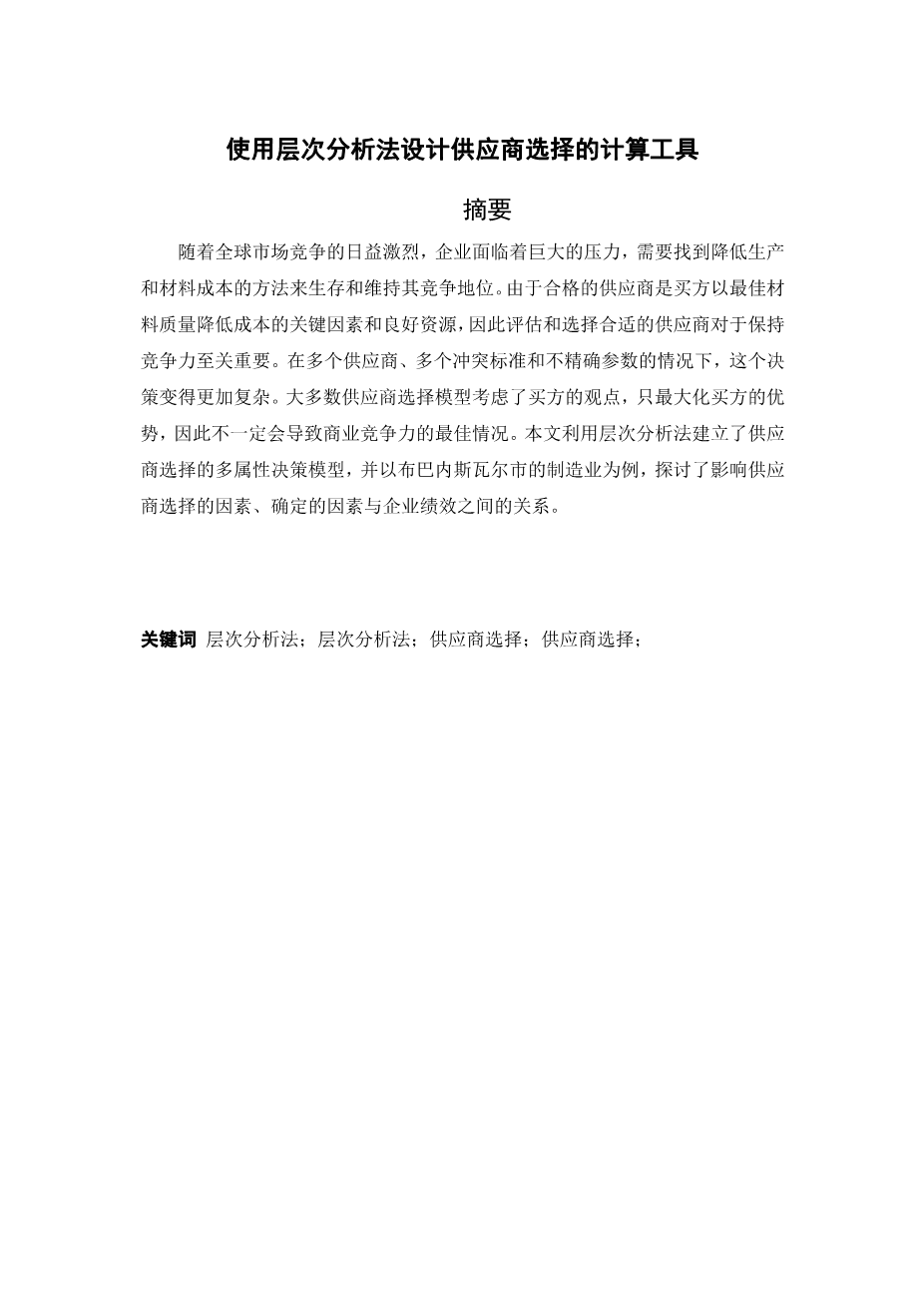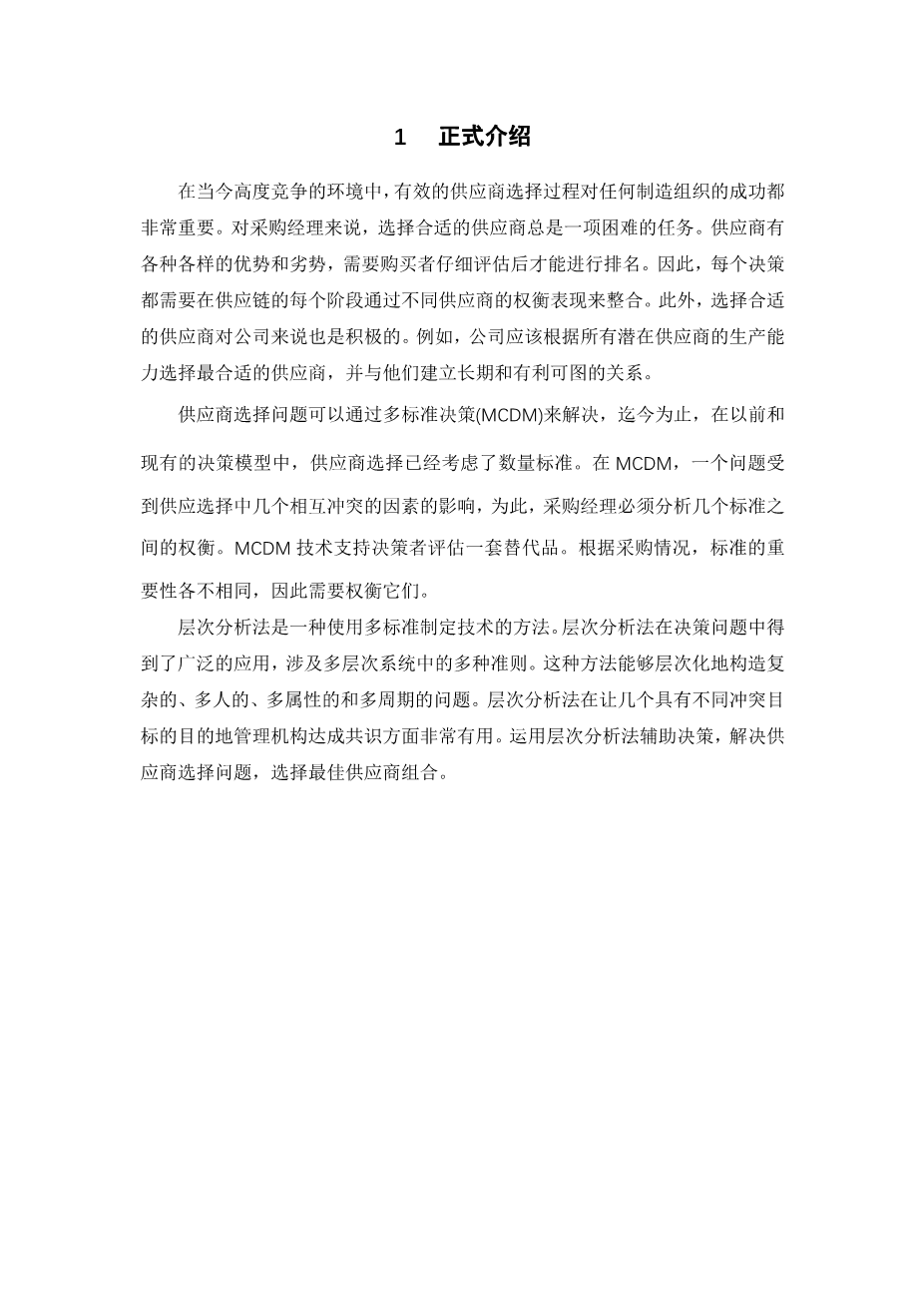Designing a computational tool for supplier selection using analytical hierarchy process
Abstract
With increasingly competitive global world markets, companies are under intense pressure to find ways to cut production and material costs to survive and sustain their competitive position. Since a qualified supplier is a key element and a good resource for a buyer in reducing such costs at optimum material quality, evaluation and selection of the right suppliers is critical to maintain competitiveness. This decision becomes more complicated in case of multiple suppliers, multiple conflicting criteria, and imprecise parameters. Most supplier selection models consider the buyers viewpoints and maximise only the buyers advantages and thus do not necessarily lead to an optimal situation for business competitiveness. This paper deals with a multi attribute decision model using AHP for the justification of supplier selection, explore the factors influencing the supplier selection, the relationship between the identified factors and the firms performance with reference to manufacturing industries in Bhubaneswar City.
Keywords analytical hierarchy process;AHP;supplier selection;vendor selection;firm performance.
1 Introduction
In todays highly competitive environment, an effective supplier selection process is very important to the success of any manufacturing organisation. Selecting the right supplier is always a difficult task for the purchasing manager. Suppliers have varied strengths and weaknesses, which require careful assessment by the purchasers before ranking, can be given to them. Therefore, every decision needs to be integrated by trading-off performances of different suppliers at each supply chain stage. In addition, choosing the right supplier will be positive for the company. For instance, firms should select the most appropriate suppliers according to the production capacity of all potential suppliers, and build long-term and profitable relationships with them.
The supplier selection problem can be solved with multiple-criteria decision making (MCDM), out of which quantities criteria have been considered for supplier selection in the previous and existing decision models so far. In MCDM, a problem is affected by several conflicting factors in supplying selection, for which a purchasing manager must analyse the trade-off among several criteria. MCDM techniques support the decision-makers (DMs) in evaluating a set of alternatives. Depending upon the purchasing situations, criteria have varying importance, and there is a need to weigh them.
The analytical hierarchy process (AHP) approach is one that uses multi-criteria making techniques. The AHP has found widespread application in decision making problems, involving multiple criteria in systems of many levels. This method has the ability to structure complex, multi-person, multi-attribute, and multi-period problems hierarchically. The AHP can be very useful in involving several DMs with different conflicting objectives to arrive at a consensus. The AHP method is identified to assist in decision making to resolve the supplier selection problem in choosing the optimal supplier combination.
2 Background of the study
There are some trends that net price, delivery, and quality have received the greatest amount of attention in the last years. These criteria were discussed more than any other criteria. On the other hand, several criteria have received little attention in the last years. During the last years some citations could be found for warranties and claim policies, communication system, impression, labour relations record, amount of past business, and reciprocal agreements; the some others was found for bidding procedural compliance, desire for business, operating controls, packaging ability, training aids; and only a limited number of citations were found for performance history, financial position, and reputation and position in industry. The traditional purchasing scenario has contributed to short-sighted relationships.
Typically, the characteristics of an effective supplier relationship include:
1.fewer, more capable suppliers located as close to the manufacturers plant as possible
2.frequent deliveries in smaller lot sizes, in exact quantities, and packaged in a format that is compatible with the manufacturers replenishment scheme to the floor
3.stable, synchronised schedules between manufacturers and suppliers, with tight delivery windows
4.minimal purchase order paperwork processing due to long-term contracts, electronic data interchange, and bar-coding applications
5.vendor certification and ship-to-stock programs because of outstanding vendor quality achievements (the parts-per-million philosophy)
6.continuous improvement programs such as value analysis, quality improvements, and cost reductions conducted jointly by manufacturers and supplier personnel.
3 Literature review
One major aspect of the purchasing function is supplier selection is the acquisition of required material, services and equipment for all types of business enterprises. By it very nature the purchasing function is a basic part of business management. In todays competitive operating environment it is impossible to successfully produce low cost, high quality products without satisfactory suppliers. Thus one of the most important purchasing decisions is the selection and maintenance of a competent group of suppliers. The selection of competent suppliers has long been regarded as one of the most important fu
剩余内容已隐藏,支付完成后下载完整资料


英语译文共 13 页,剩余内容已隐藏,支付完成后下载完整资料
资料编号:[605166],资料为PDF文档或Word文档,PDF文档可免费转换为Word
课题毕业论文、文献综述、任务书、外文翻译、程序设计、图纸设计等资料可联系客服协助查找。


